- Author Arianna Cook [email protected].
- Public 2024-01-12 17:55.
- Last modified 2025-01-23 09:40.
Eggplant for the winter is an original and spicy type of preparation. Their canning becomes relevant at the end of summer, when there are a lot of fruits on sale. Such blanks are tasty and healthy, moreover, this process is not at all complicated.

Recipe content:
- Ingredients
- Step by step cooking
- Video recipe
Home canning is a popular method of preparing food for the winter. And one of the affordable and simple recipes is canned eggplant. Eggplant for the winter is a popular snack not only with a wonderful taste, but also with great benefits for the body. Eggplants contain many essential minerals, especially potassium salts, which retain their qualities when preserved. If you have harvested a good harvest of these fruits and do not know how to prepare them for the winter, then this recipe will help you with this. All preparations for the winter are wonderful from eggplants, but eggplants in adjika are especially popular.
When buying this vegetable for canning, always pay attention to the fact that the eggplant is ripe, not rotted with a dark purple hue. For blanks, it is recommended to take it with the correct shape, elastic dense pulp, without voids and with a small seed nest. Its seeds should be medium in size and not particularly dark in color. As a rule, eggplants are eaten at 25-40 days of maturity from the moment the fruit is set.
- Caloric content per 100 g - 49 kcal.
- Servings - 2 cans of 0.5 l each
- Cooking time - 1 hour
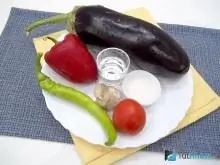
Ingredients:
- Eggplant - 3 pcs.
- Sweet red pepper - 4 pcs.
- Tomatoes - 500 g
- Garlic - 1 head
- Bitter pepper - 3 pcs.
- Sugar - 1 tablespoon
- Table vinegar - 3 tablespoons
- Salt - 1 tsp or to taste
- Vegetable oil - for frying
Cooking canned eggplant for the winter
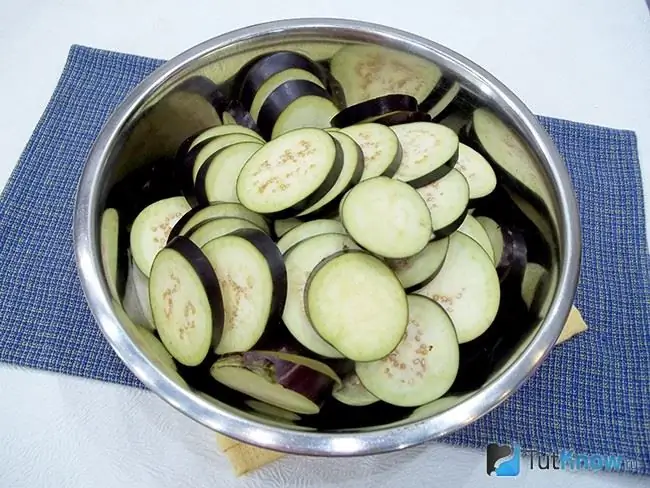
1. Wash the eggplants and cut into rings 5-7 mm thick. If the fruits are ripe, then the bitterness must first be removed from them. To do this, they are salted and left for 20 minutes. Then they are washed and dried.
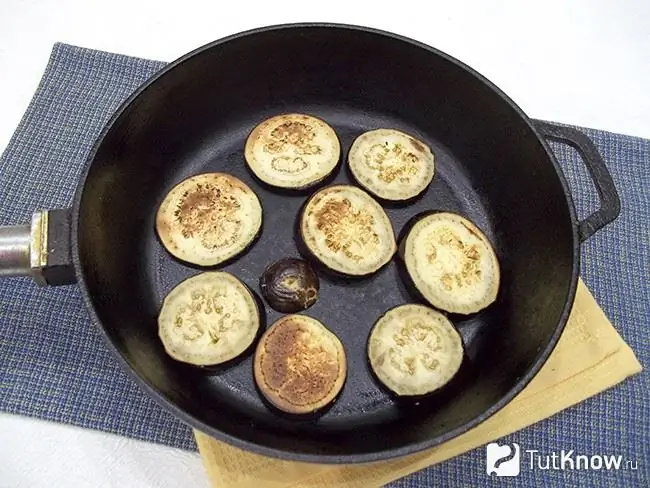
2. In a skillet in vegetable oil, fry the eggplants on both sides until golden brown. During frying, they will absorb a lot of oil, which will make the snack too greasy. To reduce the oil content, you need to use a non-stick pan or cast iron pan. You can also bake eggplant slices in the oven or on a wire rack over a fire.
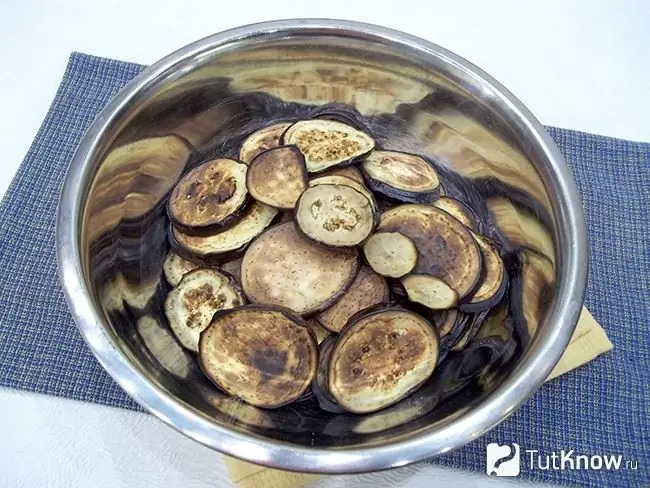
3. Place the fried eggplants in a container.
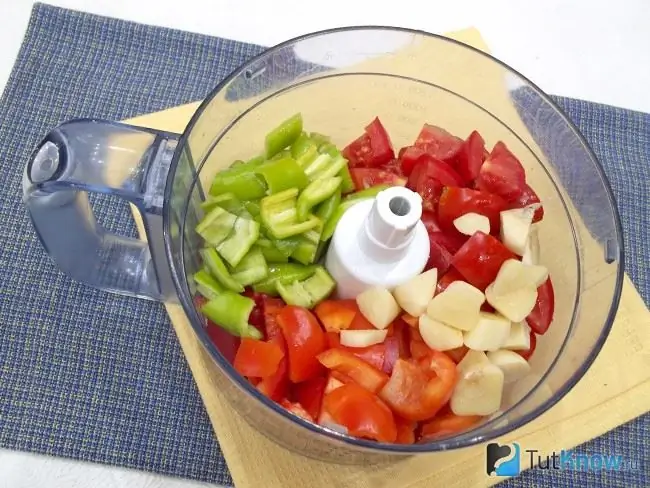
4. Now get down to cooking adjika. To do this, peel the sweet and bitter peppers from the seeds with partitions and cut them. Remove the husk from the garlic, and divide the tomatoes into 2-4 parts. Load the vegetables into a food processor with a chopping knife attachment.

5. Grind vegetables to a puree consistency. If you don't have a food processor, then mince them. Pour the vegetable mass into a deep container, where add sugar, salt, vegetable oil and vinegar. Mix everything well.
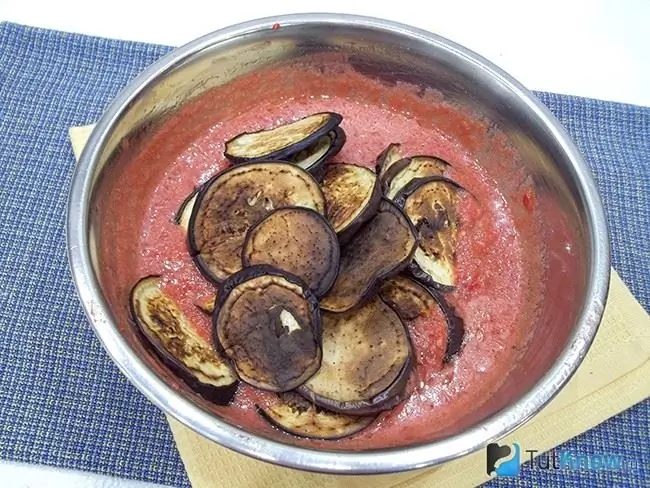
6. Load some of the fried eggplants into adjika.
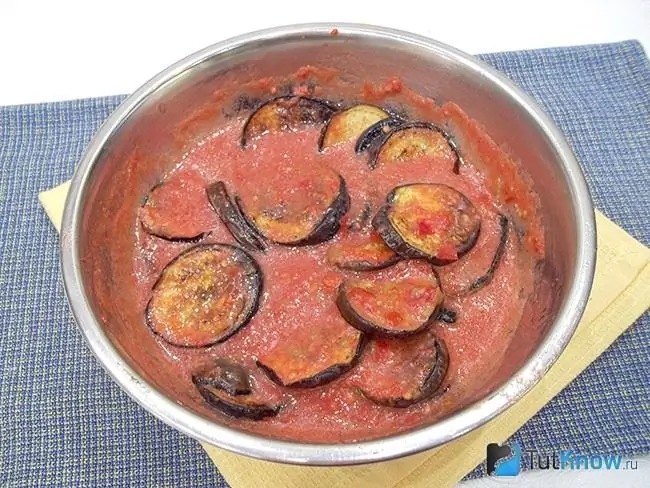
7. Stir the eggplants well so that they are completely covered with the vegetable mass.

8. Pasteurize glass jars over boiling steam and fill them to the top with eggplants, shifting adjika.
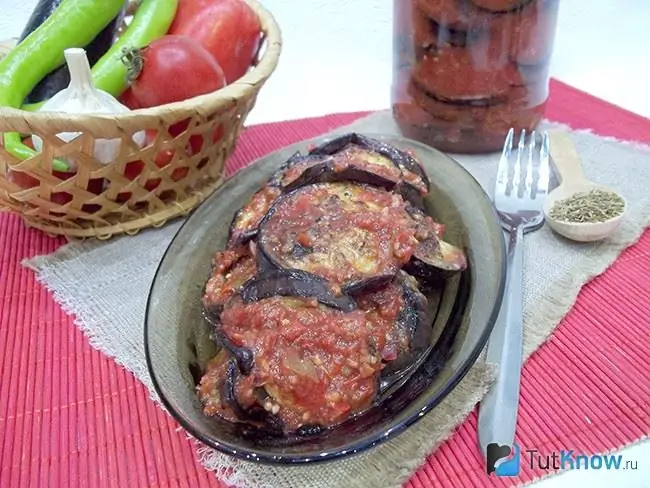
9. Close the container with sterile lids, turn over the back side, wrap with a warm towel and leave to cool completely. Store canned food at room temperature.
See also a video recipe on how to make a delicious eggplant salad. Preservation of workpieces for the winter.






